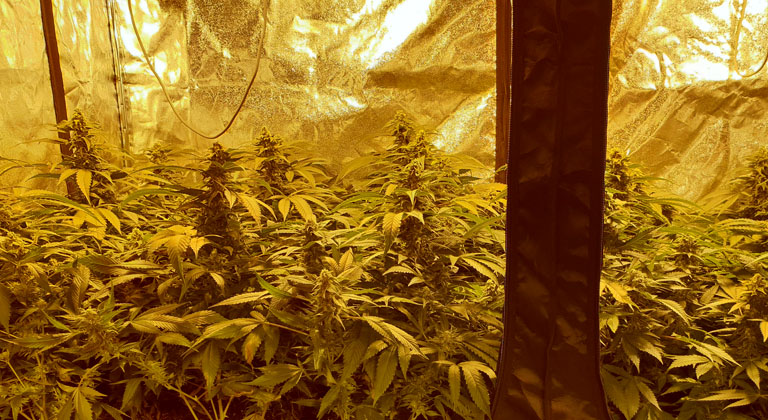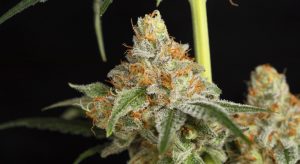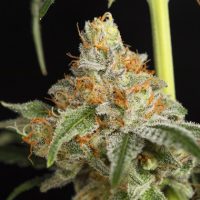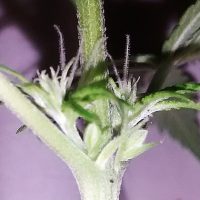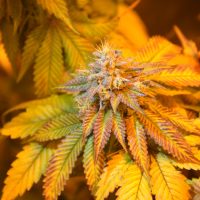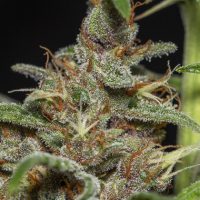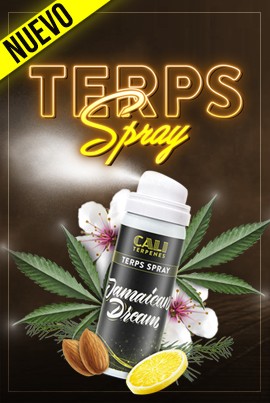Whether you’re growing indoors or deciding to start your own cannabis grow outdoors, heat stress is one of the factors that can prevent your cannabis plants from developing properly. Here’s everything you need to know about this issue to ensure a successful grow and obtain delicious yields.
What is Heat Stress and How does it Affect your Cannabis Plants?
Cannabis plants can experience stress due to various reasons such as insect infestations, lack of watering, improper pH levels, and also from being exposed to excessively high temperatures. The optimal temperature range for proper plant development is around 19°C at night (or when the lights are off) and 25°C during the day (or when the indoor lights are on).
However, most cannabis strains can tolerate higher temperatures without issues. Nevertheless, when the thermometer surpasses 30 degrees, symptoms indicating thermal stress may start to appear.
This type of stress occurs when cannabis plants are exposed to high temperatures for prolonged periods of time. This can have a negative impact on their growth and yield.
How to Recognize the Most Common Symptoms of Heat Stress in your Cannabis Plants
As with other issues that can arise during the growing process, it’s essential to identify symptoms of heat stress in order to take action as soon as possible:
- Leaves with a sickly appearance and edges curled upwards. The leaf tips may appear dry.
- In indoor grows, the cause may be the plant being too close to the light, so the upper parts may be more affected than the rest, sometimes even burned.
- Irregular brown spots on the leaves.
- During the flowering stage, if the plant experiences heat stress, additional shoots may form on the existing buds. This is known as “foxtailing” and shows as elongated structures protruding from the buds that would typically have a more rounded shape.
- During the flowering stage, more white pistils may appear in the final weeks (approaching harvest time), whereas normally they would have turned a coppery color.
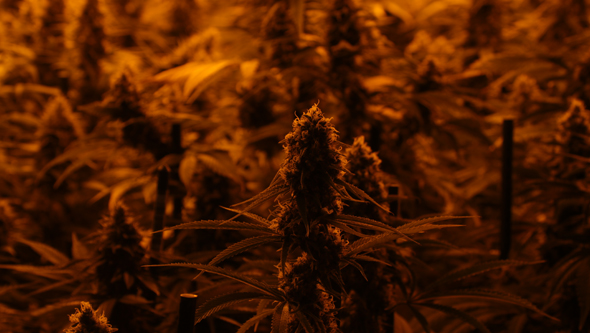
How to Protect your Cannabis Plants from Heat Stress in Indoor Grows?
In indoor grows you have greater control over environmental elements, which gives you the opportunity to implement effective measures to protect your plants from excessive heat. Here are different strategies you can employ, ranging from choosing the right location to lighting systems, among others.
Choose the right location for your indoor cannabis grow
The placement of your indoor cannabis plants can contribute to protecting them from excessive heat. It’s important to consider that the more isolated the room is from the outside, the better. If you live in a region with a hot climate and choose a room with walls exposed to the sun, especially facing south, it will be more challenging to control temperatures during the summer.
Ventilation and extraction systems
A good ventilation system is essential for maintaining proper airflow within your indoor grow, preventing heat buildup and pockets of humidity.
Fans inside the grow tent or room can facilitate air circulation, ensuring even distribution and preventing the development of potential pathogens. They help deliver fresh air to every corner of the area, which is crucial for the proper growth of your plants.
Choosing a suitable extraction system to properly renew the air in the room or grow tent is essential. You need to calculate the size of your growing space to determine the required extraction power.
Cooling systems
If you’re growing indoors during the summer in a cold region with short summers that don’t reach very high temperatures, you may be able to maintain the temperature inside within the appropriate parameters using only the extraction system. However, this system needs to have high power, and ideally, you should be able to adjust it through a controller to increase the extraction power as the temperature rises.
However, in most cases, this will not be sufficient to control the temperature in your growing area; if it’s 30 degrees outside, it’s impossible for the interior to be at a lower temperature.
In most cases, indoor growing during summer requires air conditioning systems.
Management of lighting and heat generated by lights in indoor grows
The lights used in indoor grows generate heat, which raises the ambient temperature. Choosing appropriate lighting is crucial to minimize the impact of these systems on the temperature of the grow room or cabinet.
Keep in mind that the distance between the light source and the plants is crucial for calibrating the heat they receive. If your plants are too close to the lamps, they may start to burn from the top, in which case you should increase the distance between them and the light source to solve this issue.
High-pressure sodium (HPS) lighting systems, although they have dominated the market for years, also generate the most heat. Therefore, if your goal is to keep the temperature of your growing area under control, they may not be the most suitable option for you.
On the other hand, LED or LEC lighting systems produce less heat. While it’s true that they are slightly more expensive initially, this is offset in the long run because they consume less electricity.
In this regard, LED lighting systems are more effective than LEC systems when it comes to emitting less heat. It’s important to note that LEC lamps emit less heat than sodium lamps but more than LEDs, making them a middle ground between HPS lighting systems and LEDs.
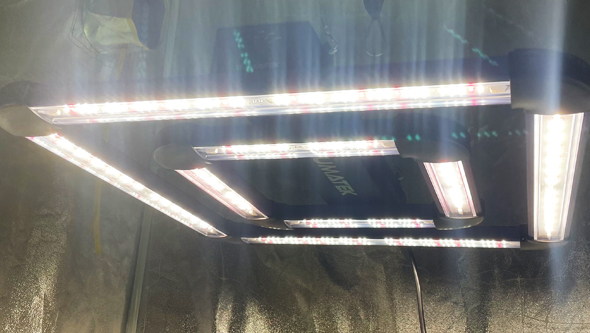
How to Protect your Cannabis Plants from Heat Stress Outdoors
In outdoor grows, controlling the environment is more challenging. However, there are measures you can take to protect your cannabis plants from heat.
Shading and sun protection during the hottest hours
Protecting your plants from the intense sun during peak hours is essential, especially if you live in a region where temperatures exceed 35 degrees Celsius during summer. A simple shade cloth will be sufficient to create the proper shading and protect your plants during the hottest hours.
Watering and Humidity
Proper watering and maintaining the correct humidity for your plants are crucial to keep them hydrated and prevent heat stress. The timing of watering plays an important role in proper absorption by your plants. It’s best to water them in the early morning or when the sun has set in the late evening. Plants have a higher absorption capacity during cooler hours, making watering more effective.
Use appropriate containers
Keeping the root mass free from excessive heat is also important to prevent thermal stress in cannabis plants. It’s recommended not to use black flowerpots, as they attract more heat. If you do use black containers, consider lining them with white plastic, for example.
Another option is to use fabric pots, which also allow for better airflow. Additionally, consider choosing a pot size and type that you can easily transport if you anticipate needing to move your plants to avoid the hottest hours.
Use mulch, organic manure, or other materials to cover the substrate
Mulch is a loose organic material such as straw that is used to cover the soil around plants. This protects the soil and helps maintain proper conditions.
This can also be achieved using organic manure. These types of coverings reduce evaporation and help retain moisture in the soil in your outdoor cannabis grows.
Choose heat-resistant strains
Not all cannabis strains tolerate high temperatures equally. While cannabis is generally resilient to environmental conditions and has adapted to various climates, choosing the appropriate variety will make a difference in this case.
There are strains that handle heat better than others. Here are some suggestions if you are growing cannabis outdoors in very hot regions:
- Marruecos Beldía Kif
- Sweet Afghani Delicious Auto
- Amnesia
- High level
- Jamaican Dream
- Acapulco Gold
- LSD 25 Auto
- Lemon King
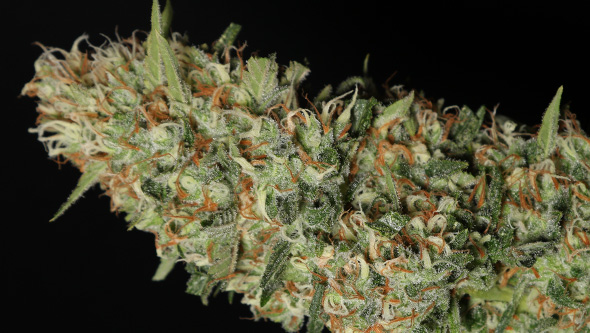
Now that you know all the tricks to prevent your plants from experiencing thermal stress, all that’s left is to decide which seed you’re going to choose. Happy harvesting!
La Huerta Grow Shop
